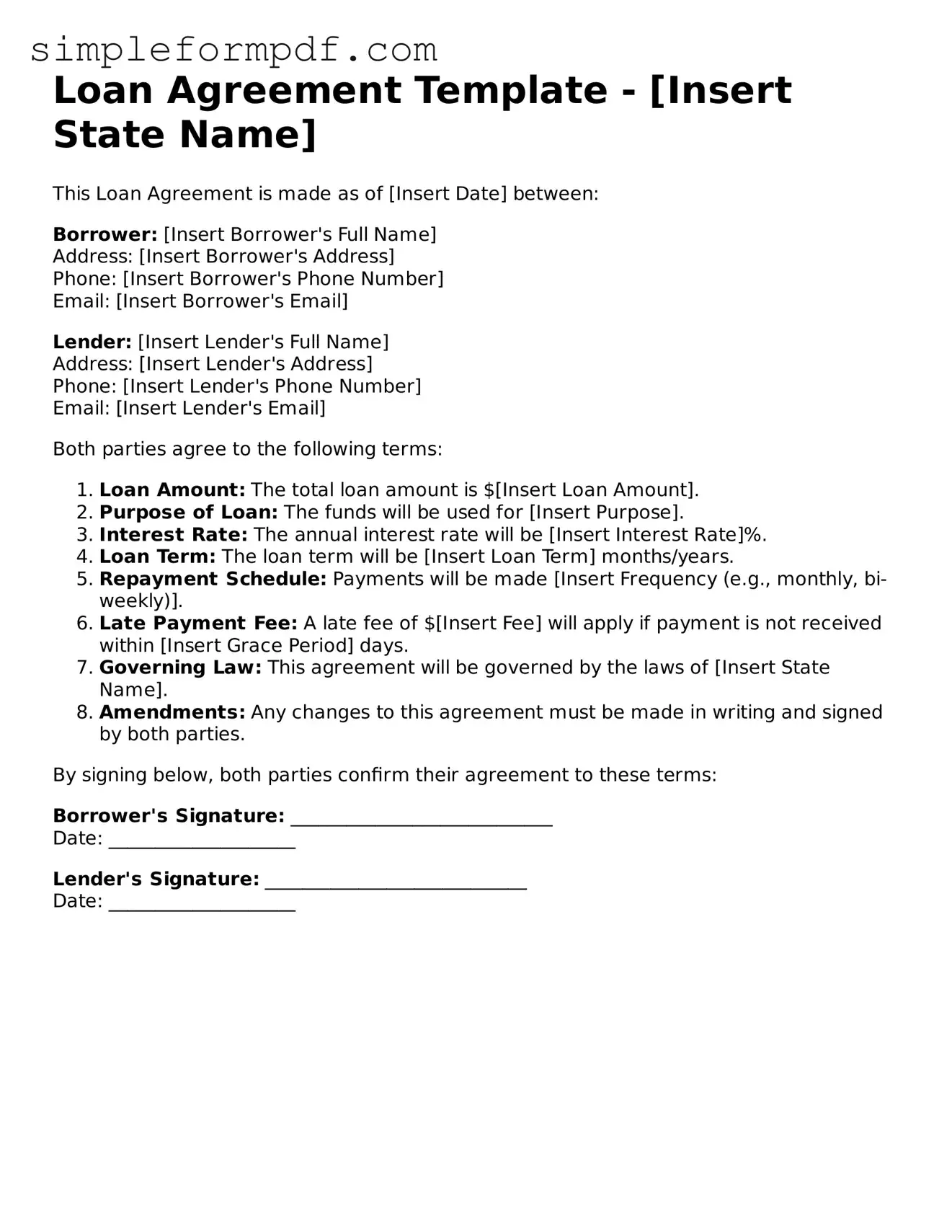Loan Agreement Template - [Insert State Name]
This Loan Agreement is made as of [Insert Date] between:
Borrower: [Insert Borrower's Full Name]
Address: [Insert Borrower's Address]
Phone: [Insert Borrower's Phone Number]
Email: [Insert Borrower's Email]
Lender: [Insert Lender's Full Name]
Address: [Insert Lender's Address]
Phone: [Insert Lender's Phone Number]
Email: [Insert Lender's Email]
Both parties agree to the following terms:
- Loan Amount: The total loan amount is $[Insert Loan Amount].
- Purpose of Loan: The funds will be used for [Insert Purpose].
- Interest Rate: The annual interest rate will be [Insert Interest Rate]%.
- Loan Term: The loan term will be [Insert Loan Term] months/years.
- Repayment Schedule: Payments will be made [Insert Frequency (e.g., monthly, bi-weekly)].
- Late Payment Fee: A late fee of $[Insert Fee] will apply if payment is not received within [Insert Grace Period] days.
- Governing Law: This agreement will be governed by the laws of [Insert State Name].
- Amendments: Any changes to this agreement must be made in writing and signed by both parties.
By signing below, both parties confirm their agreement to these terms:
Borrower's Signature: ____________________________
Date: ____________________
Lender's Signature: ____________________________
Date: ____________________
